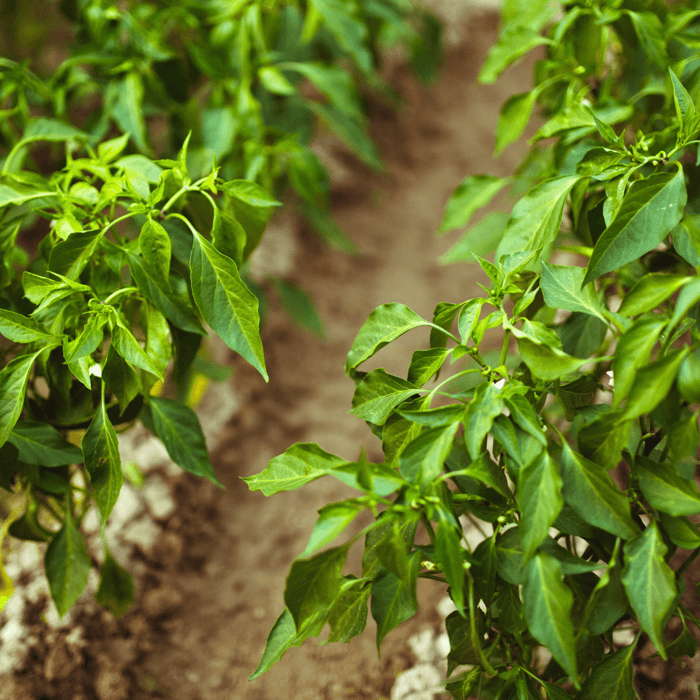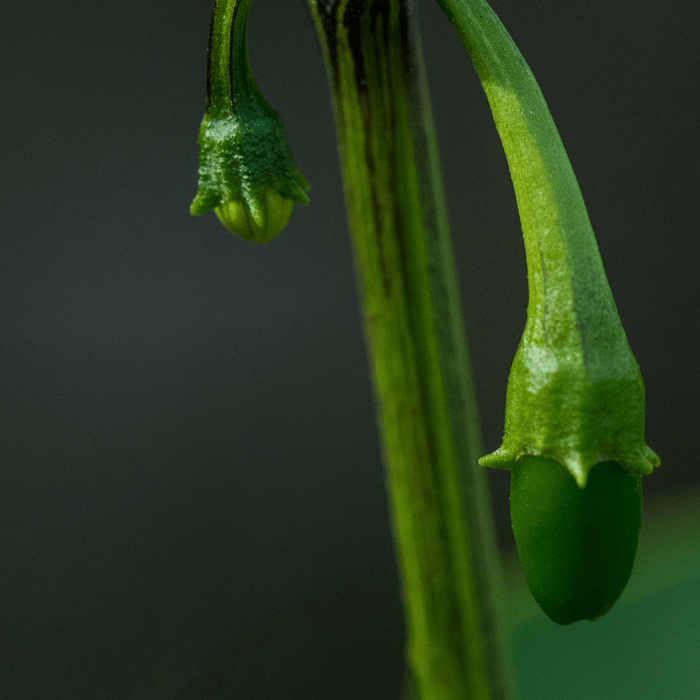Hello fellow gardeners! I'm a passionate gardener who loves experimenting with different types of plants. Today I'm going to guide you through growing one of the hottest peppers in the world: the ghost pepper, also known as the naga jolokia or bhut jolokia. You can cultivate this fiery hot pepper variety in your garden with the proper care and attention. Follow this step-by-step guide for how to grow ghost pepper seeds, and you'll soon be harvesting ghost peppers to add severe heat to your favorite dishes.
1. Introduction to Ghost Peppers
Ghost peppers are an extremely hot pepper variety that originated in India. In fact, they were once considered the hottest pepper in the world. Although they've been surpassed by a few other types in terms of heat, they still pack an intense punch.
Here are some critical facts about ghost peppers:
- Scientific name: Capsicum chinense 'Bhut Jolokia'
- Scoville Heat Units (SHU): 855,000 – 1,041,427
- Native to: India
Ghost Pepper Seeds - Bhut Jolokia
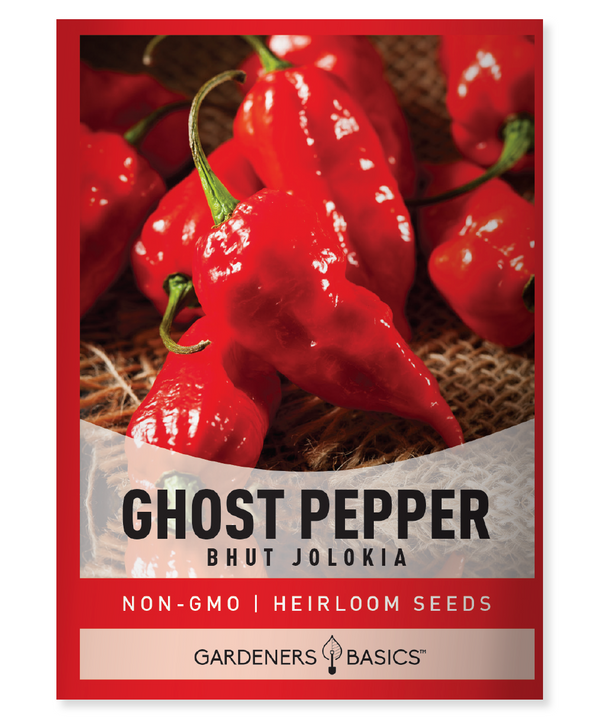
$2.49
Bhut Jolokia Ghost Pepper Seeds for Planting | Super Hot Heirloom Peppers The Bhut Jolokia or Ghost Pepper was rated the spiciest chili in 2007. It has an intense flavor and even more intense heat! CAUTION! Extremely hot pepper! Handle with… read more
Ghost Pepper Characteristics
- Days till maturity: Ghost peppers typically take around 100-120 days to reach maturity from the time of transplanting.
- Planting depth: Sow ghost pepper seeds approximately 1/4 inch deep in the soil.
- Plant spacing: Space ghost pepper plants about 18-24 inches apart in 24-36 inches apart rows.
- Days to germination: Ghost pepper seeds can take a long time, usually 2-4 weeks.
- Start indoors or direct sown: It's recommended to start ghost pepper seeds indoors or in a greenhouse to ensure proper germination and early growth. Direct sowing is not recommended, as the seeds require consistent warmth and controlled conditions to germinate successfully.
- Full sun or partial shade: Ghost peppers prefer full sun and need at least 6-8 hours of direct sunlight daily for healthy growth and fruit production.
- When to harvest: Harvest ghost peppers when they change from green to red, orange, or yellow, depending on the specific variety. This usually occurs around 100-120 days after transplanting.
- Plant height: Ghost pepper plants can grow about 2-4 feet tall, depending on the variety and growing conditions.
- Plant width: Ghost pepper plants can spread about 1.5-3 feet wide, depending on the variety and growing conditions.
2. Purchasing Ghost Pepper Seeds
You'll first need to acquire high-quality ghost pepper seeds to grow ghost peppers. You can purchase them online from our Gardeners Basics store.
3. Seed Starting: Germinating Ghost Pepper Seeds
To maximize your chances of success, starting your ghost pepper seeds indoors or in a greenhouse is essential. Here's how to do it:
-
Prepare the seed trays or containers: Fill seed trays or small pots with a well-draining potting soil mix. Look for soil with a pH of 6.0-6.5; this is the optimal range for pepper growing.
-
Plant the seeds: Sow ghost pepper seeds about 1/4 inch deep and cover them lightly with soil.
-
Use a heat mat: Ghost peppers require a warm environment for germination, typically around 80-90°F (27-32°C). Using a heat mat under your seed trays can help maintain the ideal temperature for germination. The hotter the pepper, the more they seem to love heat and the harder they are to germinate without using a heat mat.
-
Keep the soil moist: Maintain consistent moisture, but avoid overwatering, which can lead to rot.
-
Wait for germination: Ghost pepper seeds can take a long time, often between 2-4 weeks. Be patient and watch the bases, ensuring they have the necessary warmth and moisture.
4. Caring for Ghost Pepper Seedlings
Once your ghost pepper seeds germinate, providing the proper care to ensure their healthy growth is crucial.
-
Transplant seedlings: When your seedlings have developed their first set of true leaves, transplant them into larger containers for better root development.
-
Use grow lights: If you don't have access to full sun indoors, using grow lights can help provide the necessary light for healthy growth. Place the grow lights about 6 inches above the seedlings, and adjust the height as they grow.
-
Maintain regular watering: Ghost peppers require regular watering, but be careful not to overwater, as this can lead to root rot. Water only when the top layer of soil feels dry to the touch.
5. Transplanting Ghost Pepper Seedlings Outdoors
When the outdoor temperatures have consistently warmed up, and the risk of frost has passed, it's time to transplant your ghost pepper seedlings outdoors. Follow these steps to ensure a successful transplant:
-
Harden off seedlings: Gradually acclimate your seedlings to outdoor conditions by placing them outside for a few hours each day, gradually increasing the time spent outdoors over 7-10 days.
-
Choose the right location: Ghost peppers thrive in full sun, so select a place in your garden that receives at least 6-8 hours of direct sunlight daily.
-
Prepare the soil: Amend your garden soil with compost and other organic matter to improve drainage and fertility. Ensure the earth has a pH of 6.0-6.5 for optimal pepper growing.
-
Plant the seedlings: Space ghost pepper plants about 18-24 inches apart in rows 24-36 inches apart. Plant them slightly more profoundly than in their containers to encourage strong root development.
Hot Pepper Seeds For Planting | 5 Variety Pack
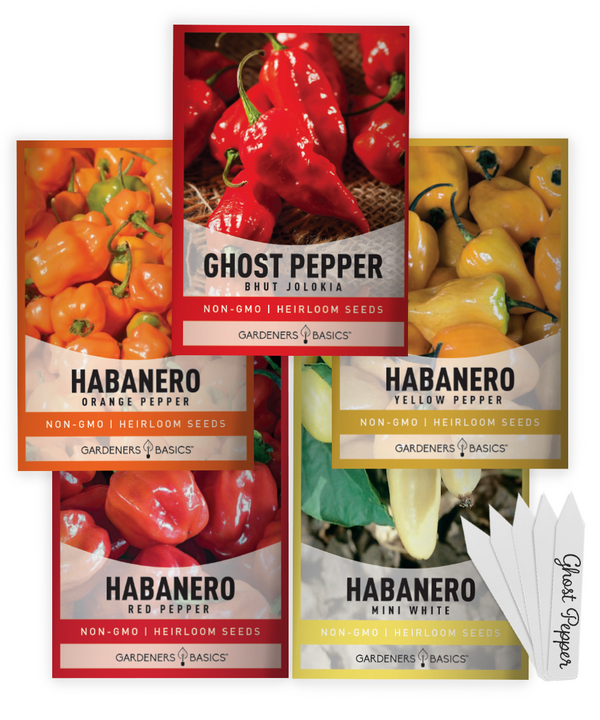
$9.95
Heirloom Hot Pepper Seeds – 5 Variety Pack, Includes Habanero & Ghost Pepper Seeds Spice up your garden with our 5 Hot Pepper Seeds Variety Pack—a must-have for any hot pepper lover or home gardener! This premium collection includes heirloom, non-hybrid,… read more
6. Caring for Ghost Pepper Plants Throughout the Growing Season
As your ghost peppers grow, follow these care tips to ensure a healthy and productive harvest:
-
Mulch: Apply a layer of organic mulch around the base of your plants to help retain moisture and suppress weeds.
-
Water consistently: Ghost peppers require consistent moisture during the growing season. Water them regularly, ensuring the soil remains evenly moist but not waterlogged.
-
Fertilize: Follow the manufacturer's instructions to apply a balanced, slow-release fertilizer at planting time and a few more times during the growing season. Don't skip fertilizing your ghost pepper plants as it is critical to get the most yield out of your plants.
-
Support: Ghost pepper plants can become top-heavy as they produce fruit. Provide support with stakes or cages to prevent them from bending or breaking.
-
Monitor for pests and diseases: Keep an eye out for common pepper pests like aphids, whiteflies, and pepper maggots, as well as conditions like bacterial leaf spots and mosaic viruses. Implement organic or chemical controls as needed to protect your plants.
7. Harvesting Ghost Peppers
After patiently nurturing your ghost pepper plants, it's finally time to harvest those fiery fruits! Here's what you need to know about harvesting ghost peppers:
- Timing: Ghost peppers typically take around 100-120 days to reach maturity. Depending on the specific variety, they will change from green to red, orange, or yellow when ripe.
- Method: Use a sharp pair of scissors or pruners to cut the peppers from the plant, leaving a small portion of the stem attached to the fruit.
- Safety: Wear gloves and protective eyewear when harvesting ghost peppers, as their capsaicin content can cause skin and eye irritation.
8. Preserving and Using Ghost Peppers
Now that you've harvested your ghost peppers, you can use them to add heat to your favorite dishes. Remember that a little goes a long way regarding these fiery peppers. To preserve your ghost peppers, you can:
- Dry them: Use a dehydrator or hang them in a well-ventilated area to dry them out. Once thoroughly dried, store them in an airtight container.
- Freeze them: Place whole or chopped ghost peppers in airtight freezer bags and store them in the freezer for future use.
- Make hot sauce or salsa: Use fresh or dried ghost peppers to create your own hot sauce or salsa, adjusting the heat level to your preference.
Happy gardening, and enjoy your homegrown ghost peppers! With patience, care, and the right growing conditions, you'll have a bountiful harvest of these fiery fruits to spice up your meals.
 Frequently Asked Questions - How to Grow Ghost Pepper Seeds
Frequently Asked Questions - How to Grow Ghost Pepper Seeds
Q: Are ghost peppers the hottest pepper in the world?
A: While ghost peppers were once considered the hottest pepper in the world, they have since been surpassed by a few other varieties, such as the Carolina Reaper and Trinidad Moruga Scorpion. However, ghost peppers are scorchingly hot, and you should handle them carefully.
Q: How long does it take for ghost pepper seeds to germinate?
A: Ghost pepper seeds can take a long time germinating, often between 2-4 weeks. The germination process can be sped up by providing consistent warmth (80-90°F / 27-32°C) using a heat mat.
Q: When should I transplant ghost pepper seedlings outdoors?
A: You should transplant your ghost pepper seedlings outdoors once the risk of frost has passed and outdoor temperatures have consistently warmed up. Make sure to harden off your seedlings before transplanting them.
Q: How do I know when my ghost peppers are ripe and ready to harvest?
A: Ghost peppers typically take around 100-120 days to reach maturDepending on the specific variety, they will change from green to red, orange, or yellow.
Q: What precautions should I take when handling ghost peppers?
A: When handling ghost peppers, it's essential to wear gloves and protective eyewear, as their capsaicin content can cause skin and eye irritation. Be sure to wash your hands thoroughly after handling the peppers and avoid touching your face, especially your eyes and nose.
Q: Can I grow ghost peppers in containers?
A: Yes, you can grow ghost peppers in containers. Choose a large container with adequate drainage holes and fill it with a well-draining pottingEnsureke sure to provide the same care and attention as you would for peppers planted in the ground, including consistent watering, proper fertilization, and access to full sun.
Q: How can I increase the heat level of my ghost peppers?
A: The heat level of your ghost peppers can be influenced by genetics, environmental conditions, and stress. To potentially increase the heat level of your peppers, try the following:
- Choose a hotter variety: Some ghost pepper varieties may naturally produce sizzling fruitsEnsureure you're starting with seeds from a reputable source known for producing high-quality, hot peppers.
- Stress the plants: Introducing mild stress to your pepper plants can encourage them to produce more capsaicin, resulting in hotter peppers. One way to do this is by slightly reducing the water or increasing the time between watering.
- Provide optimal growing conditions: Ensure your ghost peppers receive full sun, consistent moisture, and proper fertilization to support their healthy growth and development.
Pepper Seed Assortment | 8 Variety Pack
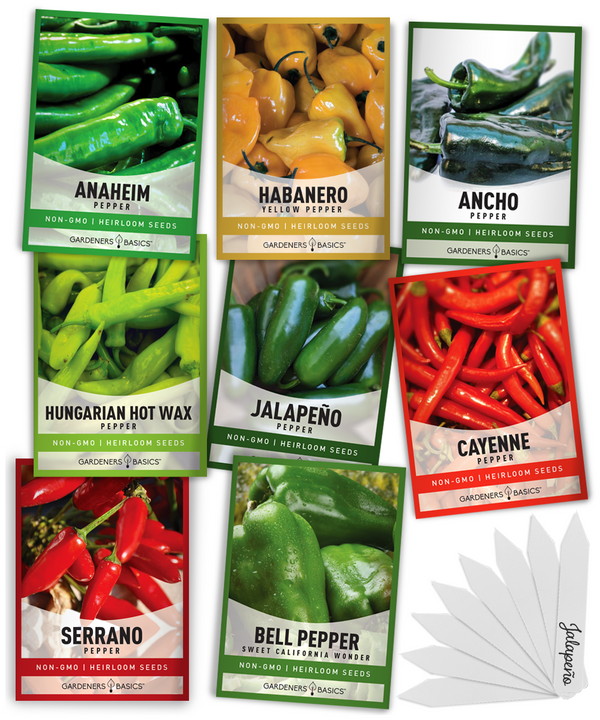
$15.95
8 Pepper Seeds Variety Pack – Heirloom, Non-GMO, Open-Pollinated, Non-Hybrid Seeds Elevate your garden with our 8 Pepper Seeds Variety Pack! This premium selection includes a mix of heirloom, open-pollinated, non-hybrid, non-GMO pepper seeds, perfect for beginner and experienced gardeners.… read more
Q: Can I grow ghost peppers indoors?
A: You can grow ghost peppers indoors if you provide the necessary growing conditions. Ghost peppers require plenty of light, so you'll need to use grow lights if you don't have access to full sun indoors. Additionally, you'll need to ensure proper airflow and consistent watering to keep your plants healthy. Growing ghost peppers indoors in containers can also make moving them outside during the warmer months more manageable to take advantage of natural sunlight.
Q: How do I protect my ghost pepper plants from pests and diseases?
A: To protect your ghost pepper plants from pests and diseases, follow these tips:
- Inspect your plants regularly for signs of pests or disease and take action as soon as you notice any issues.
- Use organic or chemical controls as needed to treat specific pests or diseases. For example, insecticidal soap can be effective against aphids and whiteflies, while copper-based fungicides can help control bacterial leaf spots.
- Practice good garden hygiene by removing dead or diseased plant material and keeping the area around your plants clean and debris-free.
- Rotate your crops to reduce the soil's buildup of pests and diseases. Avoid planting peppers or other plants in the same family (Solanaceae) in the exact location for at least two to three years.
Q: Are ghost peppers self-pollinating, or do I need to hand-pollinate them?
A: Ghost peppers are self-pollinating plants, meaning they can produce fruit without cross-pollination. However, if you're growing them indoors or in a greenhouse with limited airflow, you may need to hand-pollinate the flowers to ensure successful fruit production. To hand-pollinate, use a small paintbrush or cotton swab to transfer pollen from the male parts (stamens) of one flower to the female parts (pistil) of another. This can help increase the chances of a successful fruit set.





